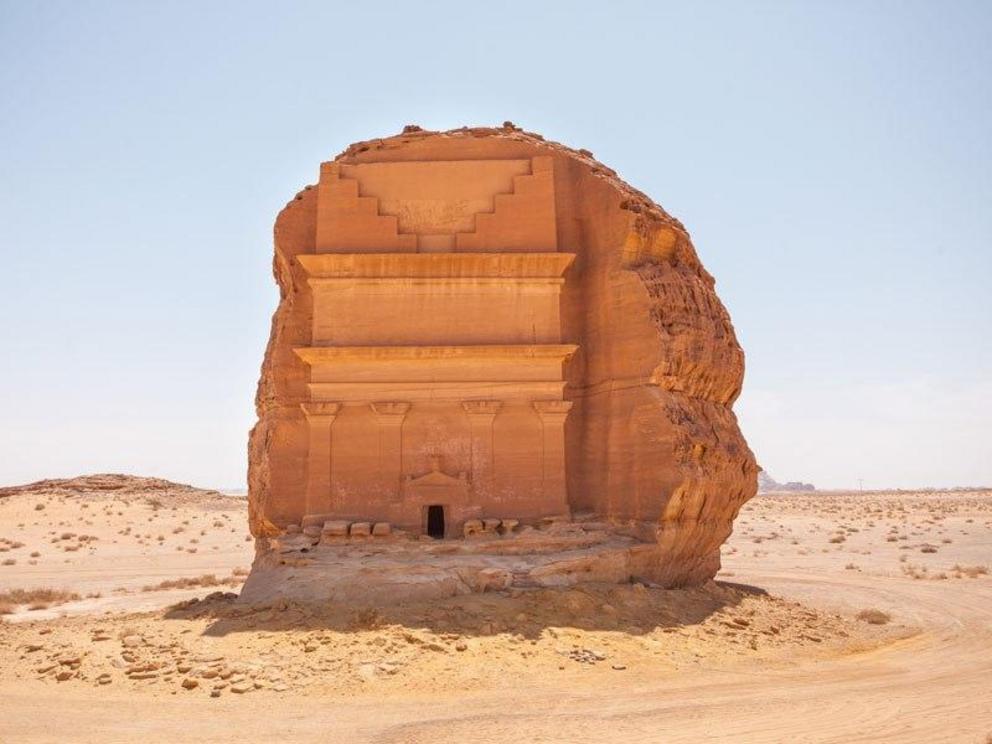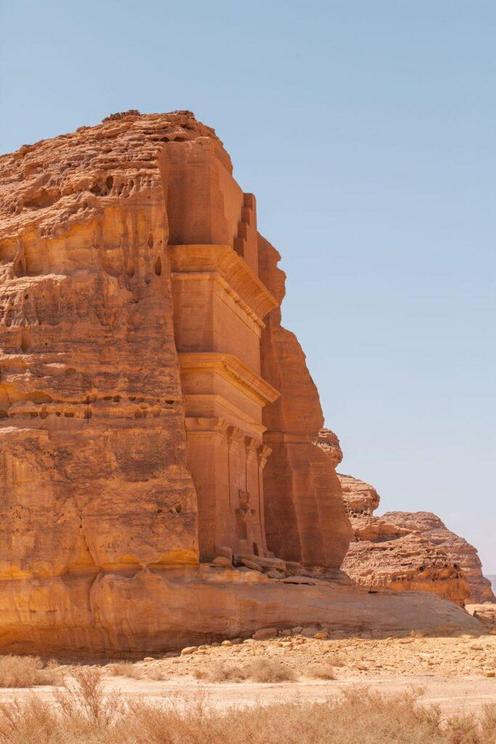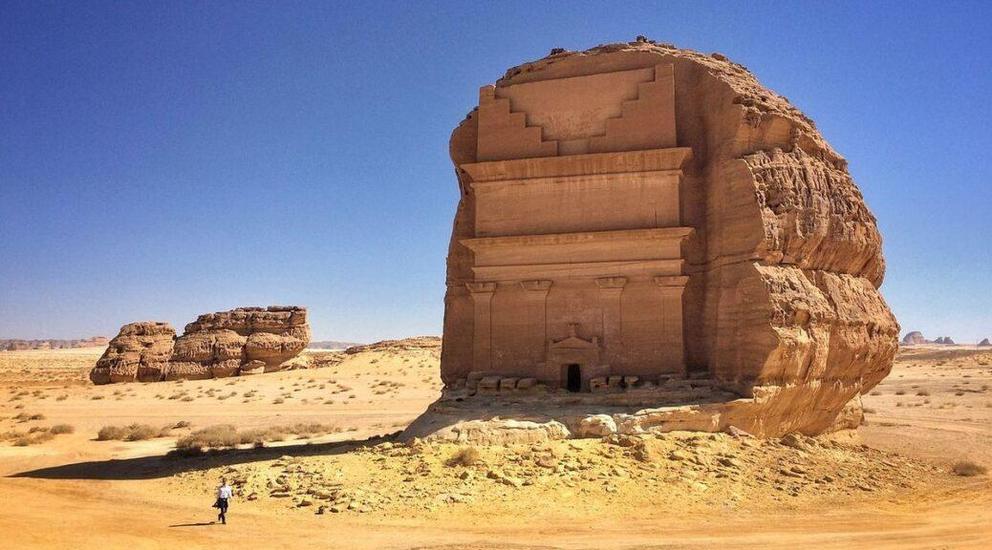The Qasr Al-Farid, The Lonely Castle of the Nabataeans
Among the Dozens of ruins located in the archaeological playground of Mada’in Saleh, one literally stands alone. Carved into a massive boulder, Qasr al-Farid, or “The Lonely Castle,” is a stunning ancient structure that rivals the majesty of any carved architecture in the world.
Created around the 1st century CE, the tall facade was never actually finished. The Nabateans had a unique construction technique that saw their tombs being chiselled right out of the rock from the top down.
Such is the case with Qasr al-Farid, although the monument appears to never have been completed, so the craftsmanship and precision of work slowly deteriorate closer to the base of the structure.

The Nabataeans were skilled craftsmen who carved their monuments out of solid rock

One of the most famous monuments of the Madain Saleh archaeological site, listed as a UNESCO World Heritage Site.
Called the “lonely castle”, Qasr Al-Farid is nevertheless a tomb. It was carved out of a rock that appeared out of nowhere about 2,000 years ago.

A construction left in suspense, suggested by the contrast between a facade meticulously carved with columns and crowns, and the other part of the rock still intact.
There seems to be no evidence of burial inside. With its unfinished taste and unusual location, the tomb of Qasr Al-Farid cultivates its mystery.
A tune from Petra to Madain Saleh
Between Qasr Al-Farid and the city of Petra, the resemblance is striking. And for good reason, both sites are from the Nabataean civilization.
The same meticulous work on the rock can be seen, although the Saudi tomb was carved from a block of stone stranded in the desert and not from a gigantic cliff.

The location of the Qasr Al-Farid tomb may suggest that it is completely independent. However, it is part of the vast archaeological site of Madain Saleh. Long unknown, the latter was only explored at the beginning of the 20th century, when a Franco-Saudi mission was commissioned to carry out excavation work.
Over 500 hectares, more than 100 tombs – remains of the Nabataean city of Hegra – have been discovered. In 2008, the site was declared a UNESCO World Heritage Site. A must if you are going to Saudi Arabia!

